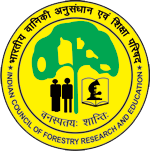Forest fires are a major threat to the environment, causing widespread damage to forests, wildlife, and property. To effectively manage forest fires, a comprehensive set of standard operating procedures (SOPs) is essential. These SOPs provide a framework for preventing, detecting, suppressing, and restoring forests from forest fires.
Prevention
Prevention is the most cost-effective and environmentally friendly approach to forest fire management. It involves a combination of public education, fuel management, and forest infrastructure development.
- Public Education and Awareness: Raise public awareness of forest fire prevention through campaigns, educational materials, and community outreach programs. Emphasize the importance of responsible behavior in forests, such as avoiding campfires and disposing of cigarettes properly.
- Fuel Management: Reduce the amount of flammable materials in forests through prescribed burns, thinning, and other techniques. This can help to slow the spread of forest fires and make them easier to control.
- Forest Infrastructure: Construct and maintain forest infrastructure, such as roads, fire towers, and water sources, to facilitate fire detection and suppression.
Detection
Early detection of forest fires is critical for effective suppression and minimizing damage. Several methods are employed for fire detection:
- Lookout towers: Trained observers stationed in lookout towers scan the horizon for smoke or other signs of fire.
- Aerial surveillance: Fixed-wing aircraft and helicopters conduct regular aerial surveys to detect forest fires.
- Remote sensing: Satellite imagery and other remote sensing technologies provide real-time data on potential fire locations.
Suppression
Once a wildfire is detected, a rapid and coordinated suppression response is crucial to control the fire and prevent its spread.
- Initial attack: Upon detection, a rapid initial attack response is essential to contain the fire and prevent it from spreading. This may involve deploying firefighters, helicopters, and air tankers to the fire site.
- Fire suppression tactics: Firefighters employ various suppression tactics depending on the fire's behavior and location. These tactics include direct attack, indirect attack, and containment.
- Firefighter safety: Firefighter safety is paramount throughout all suppression activities. Proper training, equipment, and rest periods are essential to minimize the risk of injury or death.
Restoration
Following a wildfire, restoration efforts are crucial to restore the burned area and promote long-term recovery.
- Damage assessment: A thorough assessment of the damage caused by the wildfire is conducted to identify the extent of the impact on vegetation, wildlife, and infrastructure.
- Rehabilitation: Based on the damage assessment, rehabilitation measures are implemented to restore the burned area. These measures may include seeding native plants, planting trees, constructing erosion control structures, and restoring wildlife habitat.
- Monitoring: The rehabilitated area is continuously monitored for long-term recovery and to identify any additional intervention needs.
Effective forest fire management requires a comprehensive approach that encompasses prevention, detection, suppression, and restoration. By implementing standard operating procedures and utilizing a range of strategies, we can minimize the risk of forest fires, protect our forests, and safeguard communities from the devastating impacts of these natural disasters.



